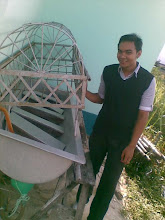
STRUCTURES II
Question Tags
Question tags adalah suatu kata atau kalimat yang digunakan untuk memberikan pertanyaan dan meminta orang yang diajak bicara setuju dengan pendapat kita. Question tags adalah kalimat Tanya yang hanya untuk menegaskan sesuatu, biasanya ekor kalimatnya (tag) diterjemahkan dengan kata “bukankah?”
Contoh:
1.You are a student, aren’t you?
2.He was at school, wasn’t he?
3.You will leave, won’t you?
4.You not a nurse, are you?
5.They haven’t left, have they?
6.He wasn’t at home, was he?
7.Come tomorrow, will you?
8.Be careful, will you?
Modal Used to
Used to biasanya diartikan dengan kata “Dahulunya” atau menjelaskan kebiasaan di masa lampau.
Contoh:
1.I used to go to school every morning when I was a student.
2.We used to have a big house.
Structures IV
Modals
Modals = to express the speaker’s feeling to an activity (action)
A.May = can
Contoh:
1.She may open her book. = Mr. Abay permitted her to open her book.
2.She might open her book. = Mr. Abay felt (thought) it is possible for her to open hr book.
3.She might have opened her book = kemungkinan besar sudah membuka buku.
May is used to shoe permission.
Contoh : May I borrow your pen.
May is used to show possibility
Contoh:
- He maybe at the library.
- He maybe have been at the library = kemungkinan tadi dia berada diperpustakaan.
B.Might is used to show possibility (great possibility)
Contoh:
Abay might be at home now
Might is used to show polite question of permission
Contoh:
Might I borrow your pen.
C.“Harus” There are three expressions in English :
Must = Bila yang mewajibkan adalah yang mengucapkan kalimat.
Have to = yang meharuskan adalah pihak ketiga.
Be to = keharusan didahului persetujuan/necessity comes after agreement.
Should = Seharusnya
“Must” wajib
“Should” ada alternative berupa saran.
Should is used to show ad visibility →Saran
Contoh: You should stay at home (kamu sebaiknya tetap di rumah).
Should is used to show expectation =harapan, keinginan
Contoh : The bus shuld be here soon (Bus dikehendaki segera disini)
Must is used to show necessity
Contoh: He must stay here until to night.
Must is used to show probability = pasti, mesti.
Contoh : He must speak Banjar very well (dia pasti bias berbicara bahasa Banjar dengan baik).
D.Ought to = Should adalah auxiliary yang bermakna saran.
E.Dare (berani) : I dare jump out to window.
F.Can is used to show ability = dapat, bias, sanggup.
Contoh : I can speak Japanese.
Can is used to permission = Ijin
Contoh : You can use my pen.
Can I borrow your pen?
G.Could is used to show past ability.
Contoh : I could speak French when I was in SMA
He could come here yesterday.
Could is used to show polite questions.
Contoh : Could I borrow your pen?
Could you please take a message?
